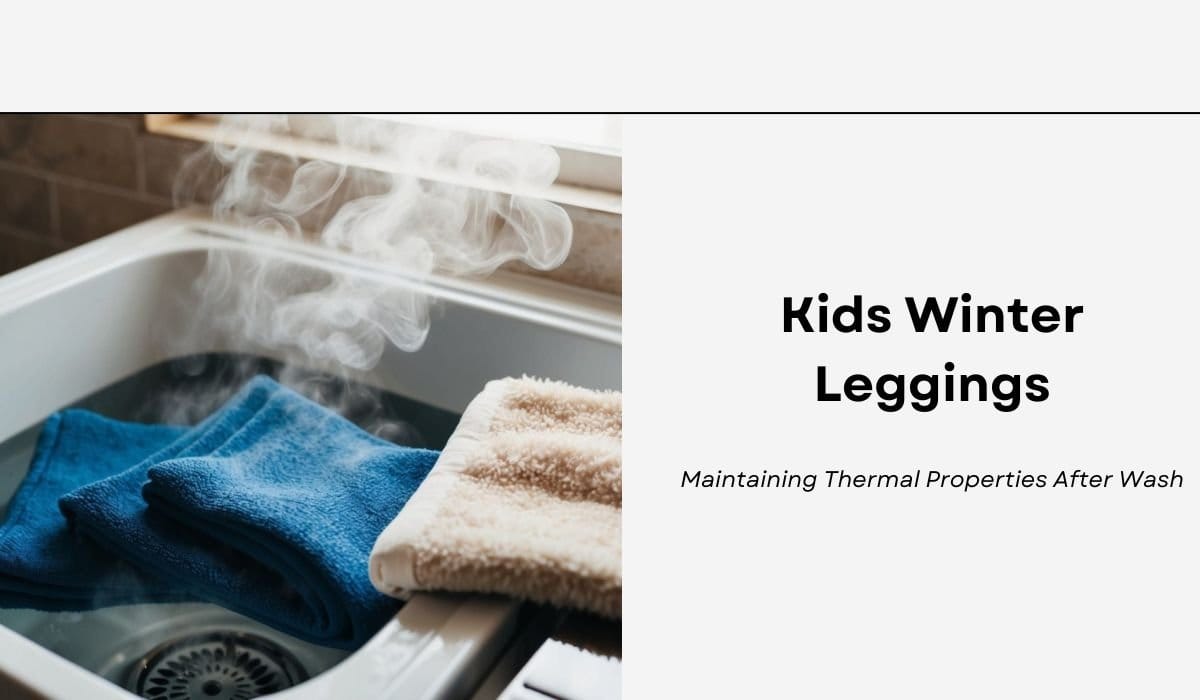Preserve the Power of Warmth: Essential Care Tips for Long-Lasting Thermal Performance
Winter leggings are a crucial part of children’s cold-weather wardrobes. They provide warmth and comfort during chilly days and outdoor activities. Quality thermal leggings can make a significant difference in keeping kids cosy and protected from the elements.
Proper care and washing of children’s winter leggings is essential to maintain their thermal properties. Many thermal leggings can be machine washed at 40°C, but it’s important to check the care label for specific instructions. Following the correct washing guidelines helps preserve the fabric’s insulating qualities, ensuring the leggings continue to keep little ones warm throughout the winter season.
Choosing the right fabric and fit is key to maximising warmth. Merino wool and synthetic blends are popular choices for their excellent insulating properties. Layering techniques can also enhance the effectiveness of winter leggings, allowing for better temperature regulation as children move between indoor and outdoor environments.
On This Page
Key Takeaways
- Winter leggings keep children warm and comfortable in cold weather
- Proper washing maintains the thermal properties of the leggings
- Fabric choice and layering techniques enhance warmth and comfort
The Importance of Quality Winter Leggings for Kids
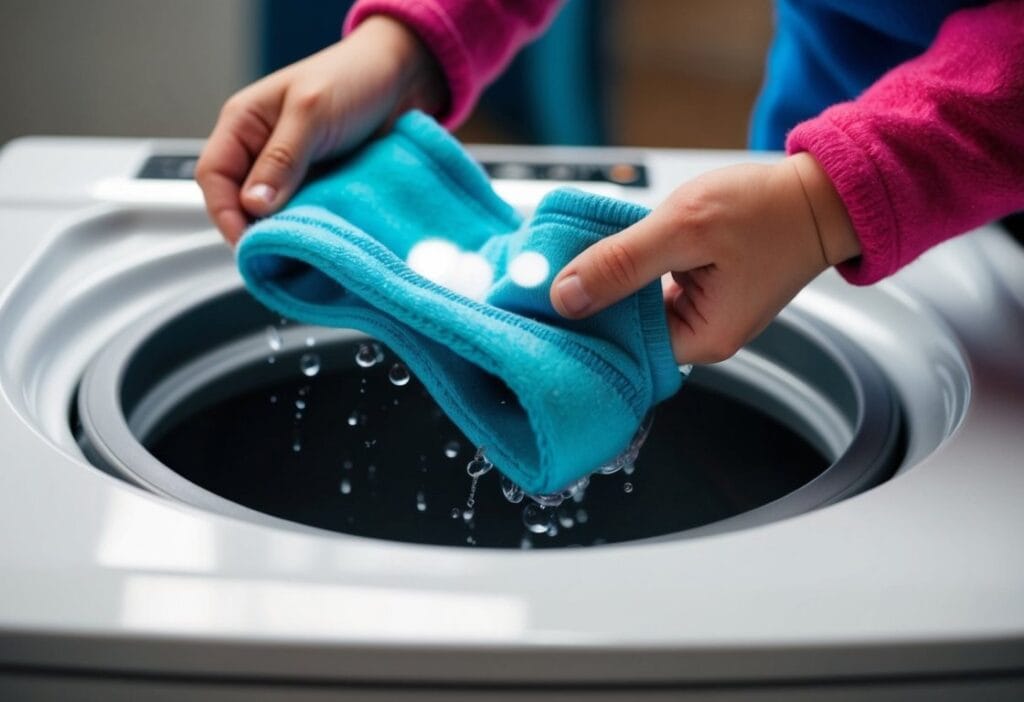
Quality winter leggings keep children warm and comfortable in cold weather. They provide a crucial base layer for outdoor activities and everyday wear during chilly months.
Thermal Insulation and Comfort
Winter leggings act as thermal underwear, trapping body heat close to the skin. This insulation helps kids stay cosy even in freezing temperatures. Good-quality leggings wick moisture away from the body, keeping children dry and preventing chills.
Thermal leggings come in different thicknesses for varied weather conditions. Thicker options suit very cold days, while thinner ones work well for milder winter weather.
A snug fit is key for optimal insulation. Leggings should be close-fitting but not restrictive, allowing for easy movement during play and sports.
Materials and Thermal Properties
The fabric of winter leggings greatly affects their warming ability. Common materials include:
- Merino wool: Excellent insulation, naturally moisture-wicking
- Synthetic fibres: Quick-drying, often blended with wool
- Cotton: Soft but retains moisture, less suitable for active wear
Some leggings feature special thermal technologies. These might include heat-trapping layers or fleece linings for extra warmth.
Durability is crucial for kids’ leggings. Quality materials resist wear and tear from active play. They also maintain their thermal properties after repeated washing, ensuring long-lasting warmth throughout the winter season.
Key Features of High-Performance Winter Leggings
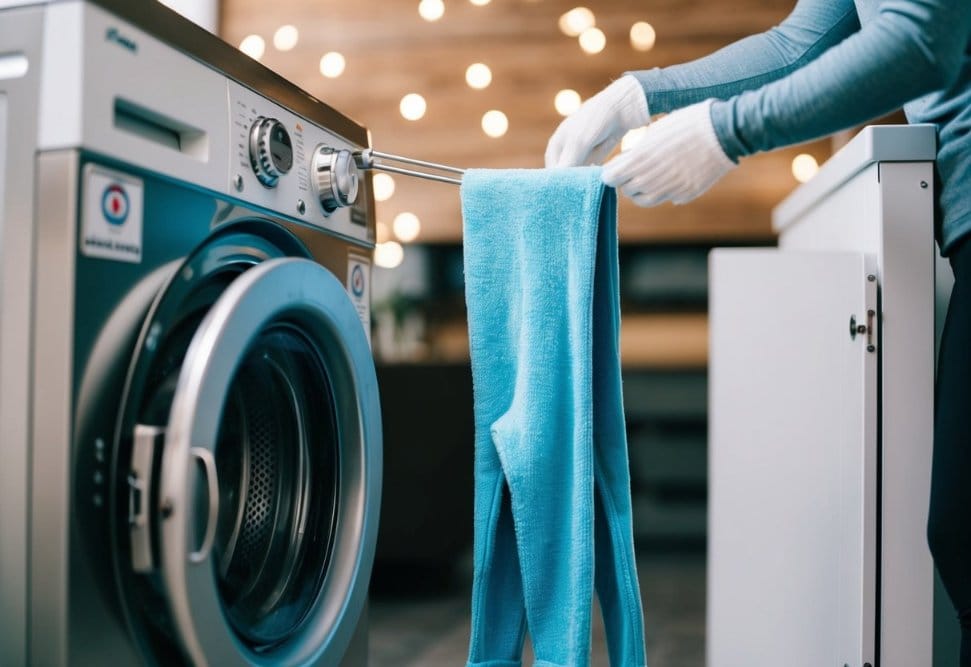
Winter leggings for kids need special features to keep little ones warm and dry. These key elements make a big difference in cold weather.
Moisture-Wicking Capabilities
Top winter leggings move sweat away from the skin. This keeps kids dry and comfy. The fabric pulls moisture to the outer layer where it can evaporate.
Some materials are better at wicking than others. Synthetic fibres like polyester work well. Merino wool is a natural option that wicks moisture too.
Look for leggings with flat seams. These reduce chafing when damp. A snug but not tight fit helps the wicking process.
Breathable Fabrics
Breathable fabrics let air flow through the leggings. This stops kids getting too hot and sweaty. It works with wicking to manage moisture.
Good breathable materials include merino wool and certain synthetics. Some brands use special weaves to boost air flow.
Mesh panels can add extra ventilation in key spots. These often go behind the knees or in the waistband.
Breathable leggings help regulate body heat. This keeps kids comfy in changing temperatures. It’s great for active kids who run hot then cool down.
Selecting the Right Fabric
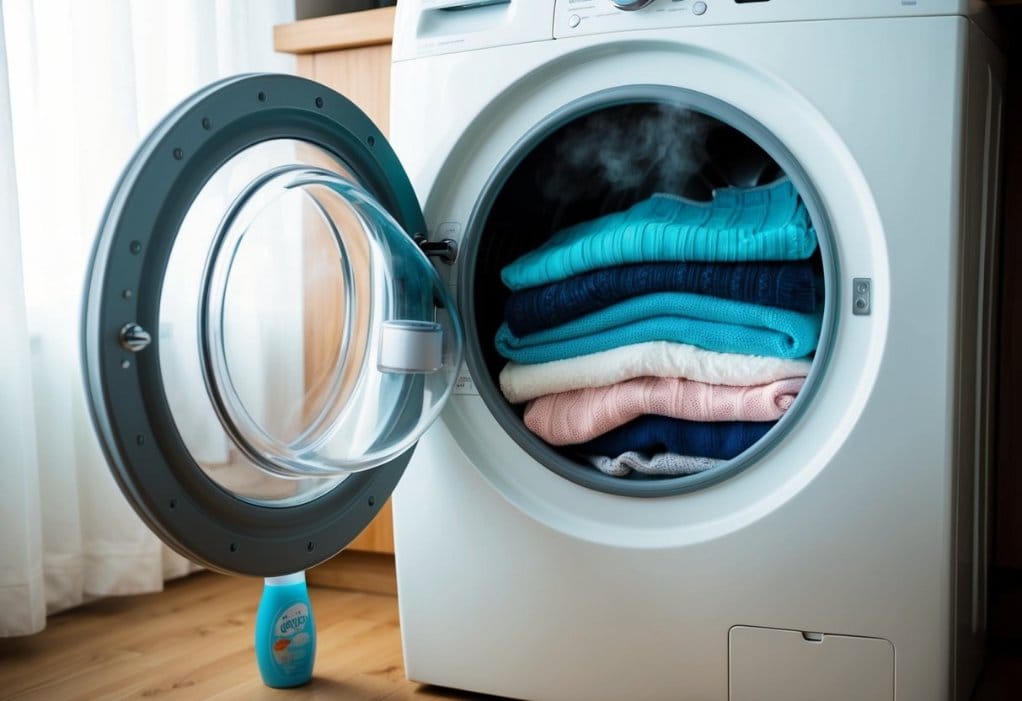
Choosing the proper fabric for kids’ winter leggings is crucial for maintaining warmth and comfort. The material impacts how well the leggings retain heat and wick moisture after washing.
Benefits of Merino Wool
Merino wool is a top choice for children’s winter leggings. This natural fibre offers excellent thermal properties that last through multiple washes. It keeps kids warm even when damp and regulates body temperature well.
Merino wool is soft against the skin, reducing itchiness common with other wools. It’s naturally odour-resistant, meaning fewer washes are needed. This fabric also dries quickly, making it ideal for active children.
Despite its delicate feel, merino wool is quite durable. It resists pilling and maintains its shape after washing. For best care, hand wash or use a gentle machine cycle with cold water.
Synthetic Versus Natural Options
Synthetic fabrics like polyester and nylon are popular for kids’ winter leggings. They’re often cheaper and more readily available than natural options.
These materials are very durable and keep their shape well after washing. Many synthetic leggings have moisture-wicking properties to keep children dry during activities.
However, synthetics may not breathe as well as natural fibres. They can sometimes retain odours more than wool or cotton.
Natural options like cotton are breathable and soft but may not insulate as well when wet. Bamboo fabric offers a mix of breathability and warmth, but can be pricier.
For the best of both worlds, look for blends that combine natural and synthetic fibres. These often provide good warmth, durability, and comfort.
Colour Choices and Their Practicalities
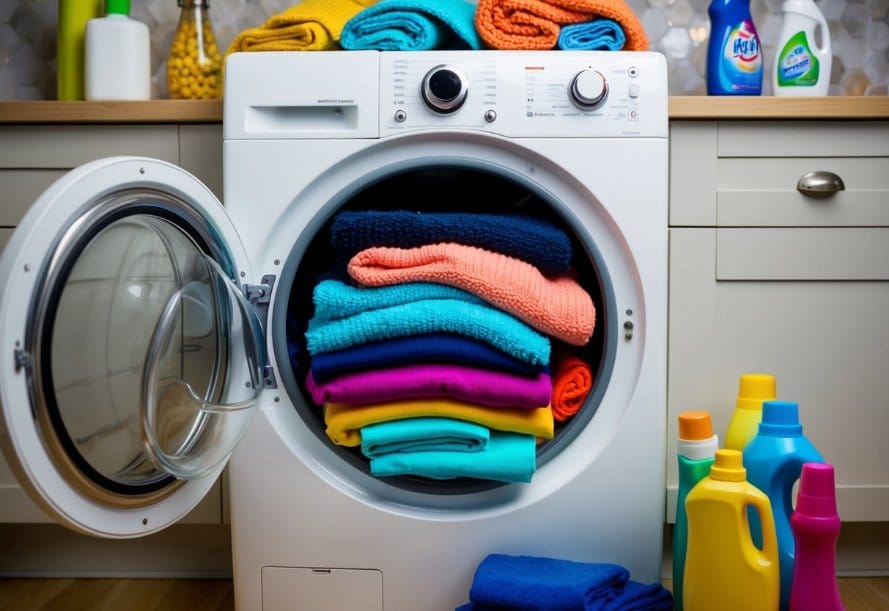
Colour plays a big role in kids’ winter leggings. It affects how they look and how easy they are to keep clean. Some colours stay bright longer than others after washing.
Keeping Colours Vibrant After Washing
Dark colours like navy and black hide dirt well. They don’t show stains as much as light colours. But they can fade over time with washing. To keep dark colours looking good:
- Wash leggings inside out in cold water
- Use a mild detergent made for dark clothes
- Dry them in the shade, not direct sun
Bright colours like red and purple can fade fast. To keep them bright:
- Add vinegar to the rinse cycle
- Use colour-catching sheets in the wash
- Avoid bleach and harsh detergents
White leggings show dirt easily. But they’re simple to clean. You can use hot water and bleach if needed.
The Meaning of Colour in Children’s Clothing
Colours can affect how we feel. Some people think they also affect how kids act. Here’s what different colours might mean:
- Red: energy and excitement
- Blue: calm and focus
- Yellow: happiness and creativity
- Green: growth and nature
- Purple: imagination and luxury
Some schools have dress codes with specific colours. Check if your child’s school has any rules about legging colours.
Neutral colours like grey, tan, and navy go with lots of other clothes. This makes it easy to mix and match outfits. Bright colours are fun but might be harder to pair with other items.
Care Instructions to Maintain Thermal Properties
Proper care is crucial for preserving the warmth and comfort of kids’ winter leggings. Following the right washing, drying, and storage methods helps keep thermal properties intact for longer.
Washing and Drying Best Practices
Always check the care label on thermal leggings before washing. Use cold or lukewarm water and a gentle cycle to protect the fabric. Avoid harsh detergents, opting for mild, liquid soaps instead.
Turn leggings inside out to reduce friction and pilling. Wash similar colours together to prevent dye transfer. Don’t overload the machine, as this can damage the fibres.
Avoid tumble drying if possible. Air drying is best for maintaining shape and insulating properties. If using a dryer, choose a low heat setting. Remove promptly to prevent wrinkles.
Storage Tips for Thermal Leggings
Store clean, dry thermal leggings in a cool, dry place away from direct sunlight. Folding is generally better than hanging to prevent stretching.
Use airtight containers or vacuum bags to protect against moisture and pests. Add cedar blocks or lavender sachets to keep leggings fresh and moth-free.
Avoid storing thermal leggings in plastic bags, which can trap moisture and lead to mildew. Instead, use breathable fabric storage bags.
Stack leggings neatly to save space and prevent creasing. Rotate the stack occasionally to ensure even wear across all pairs.
Sizing and Fit for Optimal Warmth
Getting the right fit for children’s thermal leggings is crucial for keeping kids warm and cosy in cold weather. Proper sizing ensures the leggings provide full coverage and retain heat effectively.
Importance of Proper Fit in Thermal Leggings
Thermal leggings should fit snugly without being too tight. A close fit traps body heat and creates an insulating layer next to the skin. Loose-fitting leggings allow cold air to circulate, reducing their warming ability.
Look for leggings with a bit of stretch. This lets kids move freely while maintaining a close fit. The waistband should be snug but not dig into the skin. Ankle cuffs should sit flush against the leg to prevent cold air from entering.
Length matters too. Leggings should reach the ankle without bunching or leaving gaps. Too-short leggings can expose skin to the cold when kids move or play.
Adjusting Sizes as Children Grow
Children grow quickly, so it’s important to check the fit of thermal leggings regularly. Signs that leggings are too small include riding up at the ankles, feeling tight in the waist or crotch, or leaving red marks on the skin.
When buying new leggings, consider sizing up slightly to allow for growth. Look for adjustable waistbands that can be loosened as needed. Some brands offer ‘grow-with-me’ styles with extra length that can be unfolded as children get taller.
Hand-me-downs can work well for thermal leggings, but always check the fit. Even if the size seems right, different brands may fit differently. Try leggings on before cold weather hits to ensure a good fit.
Layering Techniques for Maximum Warmth
Proper layering helps kids stay cosy in cold weather. It traps warm air and keeps the cold out. Here are key tips for layering with winter leggings.
Using Leggings as a Base Layer
Leggings make an excellent base layer for kids in winter. They’re thin and fit close to the skin, which helps trap body heat. Choose thermal leggings made from materials like merino wool or synthetic fabrics designed to wick moisture.
Put leggings on first, right against the skin. This creates a warm foundation for other layers. Make sure the leggings aren’t too tight, as this can restrict blood flow and actually make kids feel colder.
For extra chilly days, try doubling up on leggings. Use a thinner pair as the base, then add a thicker pair on top.
Combining Leggings with Other Winter Wear
Once leggings are on as a base layer, add more clothes for warmth. Start with a long-sleeved top, then add a jumper or fleece. For bottoms, put joggers or snow pants over the leggings.
Don’t forget accessories. Warm socks, boots, gloves, and a hat are crucial. These items protect extremities where body heat escapes quickly.
For outdoor play, add a warm coat as the final layer. This outer shell blocks wind and keeps all the warm layers snug underneath.
Remember to adjust layers based on activity level. Remove a layer if kids start to sweat, as damp clothes can make them feel cold.
New Technologies in Kid’s Winter Leggings
Kid’s winter leggings have seen major upgrades in recent years. New materials and smart features keep children warmer than ever before.
The Advances in Fabric Technology
Modern thermal leggings use cutting-edge fabrics. Many brands now make leggings with special heat-trapping fibres. These fibres create tiny air pockets that hold warmth close to the skin.
Some new leggings have layers that work together. The inner layer wicks sweat away. The middle layer traps heat. The outer layer blocks wind and rain.
Recycled materials are also on the rise. Brands like Mountain Warehouse use recycled polyester in their kid’s thermal leggings. This helps the planet while keeping children cosy.
Smart Textiles for Enhanced Warmth
Smart textiles are changing the game for kid’s winter wear. Some new thermal leggings can adapt to body heat. They open up tiny vents when a child gets too warm. Then they close when it’s cold again.
Other leggings have special coatings. These coatings reflect body heat back to the skin. This keeps kids warm without bulky layers.
A few brands are testing heated leggings for children. These use safe, low-voltage wires to provide extra warmth. The heat can be turned on and off as needed.
Evaluating the Effectiveness of Thermal Leggings
Thermal leggings play a key role in keeping children warm during winter activities. Proper evaluation ensures parents choose the best options for their kids.
Conducting Thermal Retention Tests
Thermal retention tests measure how well leggings maintain body heat. Scientists use specialised equipment to simulate body temperature and cold environments. They track heat loss over time to gauge insulation effectiveness.
One common method involves placing leggings on heated mannequins in cold chambers. Sensors record temperature changes at various points. This reveals how evenly the leggings distribute warmth.
Another approach uses thermal imaging cameras. These show heat patterns across the leggings’ surface. Brighter areas indicate better insulation, while darker spots reveal heat loss.
Comparative Analysis of Brands
Comparing different brands helps identify top-performing thermal leggings. Researchers test multiple products under identical conditions for fair results.
Key factors include:
- Insulation: How well leggings trap heat
- Breathability: Ability to release excess moisture
- Durability: Resistance to wear and tear
- Fit: Snugness and comfort for active kids
Tests often involve real children wearing leggings during outdoor activities. Parents and kids provide feedback on warmth, comfort, and ease of movement.
Lab tests measure specific properties like thermal conductivity and moisture-wicking. These give precise data on material performance.
Shopping Guide for Winter Leggings
Winter leggings provide warmth and comfort for kids during cold weather. Choosing the right pair involves considering quality, price, and seasonal deals.
Where to Purchase Quality Leggings
Mountain Warehouse offers great value children’s thermal base layer leggings ideal for winter sports. They provide free shipping on orders over £50.
H&M sells girls’ winter leggings with fleece linings and knitted options in various colours and patterns. Their range caters to ages 2-8 years.
Decathlon stocks kids’ thermal leggings alongside waterproof trousers and ski trousers. They also sell leggings for different activities like jogging and horse riding.
For premium options, Icebreaker sells merino wool base layers including thermal tops and leggings for children. These provide excellent warmth and comfort.
Seasonal Offers and Discounts
Many retailers offer winter sales on kids’ clothing, including thermal leggings. Black Friday and Boxing Day are prime times for discounts.
Some shops provide bundle deals on base layers, allowing you to save when buying tops and bottoms together.
Sign up for retailer newsletters to get early access to sales and exclusive discount codes for winter wear.
Look out for end-of-season clearances in late winter. This is a great time to buy thermal leggings for the next year at reduced prices.
Maintaining Privacy and Safety When Purchasing Online
Buying kids’ winter leggings online requires attention to privacy and safety. Shoppers should review key policies and terms before making purchases.
Understanding Privacy Policy
Privacy policies explain how websites handle personal data. Look for details on what information is collected and how it’s used. Check if the site shares data with third parties. Many sites use cookies to track browsing habits.
See if you can opt out of data collection. Some shops let you choose what info to share. Look for clear language about data security measures. Good policies explain how they protect payment details and addresses.
Make sure the site has contact info for privacy questions. Be wary of sites that don’t have a clear policy or make it hard to find.
Navigating Terms and Conditions
Terms and conditions set the rules for using a website. They cover important topics like returns, refunds, and shipping. Read these carefully before buying kids’ leggings.
Look for details on exchange policies if the leggings don’t fit. Check how long you have to return items. Some shops charge restocking fees for returns.
Review dispute resolution methods. See how the shop handles complaints or issues with orders. Check if they offer buyer protection or guarantees.
Be aware of any restrictions on use of the site. Some may limit how many items you can buy. Others might have rules about reselling products.
Frequently Asked Questions
Proper care and maintenance are key to preserving the thermal qualities of children’s winter leggings. The following questions address common concerns about washing, drying, and caring for these essential cold-weather garments.
How can I retain the insulating properties of my child’s winter leggings after repeated washing?
Turn the leggings inside out before washing. Use cold water and a gentle cycle. Avoid fabric softeners, as they can coat fibres and reduce insulation. Air dry or tumble dry on low heat to prevent damage to thermal materials.
What is the best way to wash thermal leggings to maintain their thermal qualities?
Hand wash or use a delicate cycle with cold water. Choose a mild detergent made for woollens or technical fabrics. Rinse thoroughly to remove all soap residue. Gently squeeze out excess water without wringing or twisting the garment.
How frequently should thermal tights for children be laundered to balance hygiene and thermal efficiency?
Wash thermal leggings after every 2-3 wears, unless visibly soiled. Over-washing can break down fibres and reduce insulation. Between washes, air out the leggings to keep them fresh and maintain their thermal properties.
Are there specific laundry detergents recommended for preserving the heat retention of kids’ thermal wear?
Look for pH-neutral detergents designed for wool or technical fabrics. These are gentler on fibres and help maintain the garment’s structure. Avoid harsh chemicals, bleach, and fabric softeners that can damage thermal materials.
Can drying techniques affect the thermal integrity of children’s winter leggings, and if so, how?
Yes, drying methods can impact thermal properties. Air drying is best to preserve insulation. If using a tumble dryer, choose a low heat setting. Avoid high heat, which can shrink or damage thermal fibres. Remove promptly from the dryer to prevent wrinkles.
What are the signs that a child’s thermal leggings are losing their thermal capacity, and how can this be prevented?
Look for thinning fabric, pilling, or a less snug fit. If the leggings feel less warm or take longer to heat up, their insulation may be declining. Prevent this by following care instructions, washing in cold water, and avoiding harsh detergents or high heat drying.
Related Post: How to Care for Kids’ Leggings and Bottoms: Essential Tips for Long-Lasting Wear

